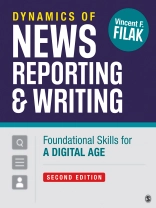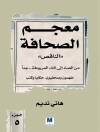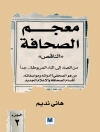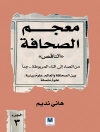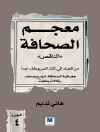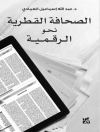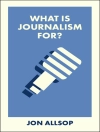Dynamics of News Reporting and Writing: Foundational Skills for a Digital Age shows students how to approach their stories and think on their feet in the evolving media landscape. Recognizing that well-crafted stories are founded on sharp prose, author Vincent F. Filak covers more foundational elements of a newswriting textbook, like lead writing, structure, and storytelling, while also teaching students how to think critically and determine what matters most to their readers. The Second Edition includes even more writing and grammar exercises, discussions of social media and digital media advancements, and additional career-related examples to help students succeed upon entering the field.
Inhaltsverzeichnis
Preface
Acknowledgments
About the Authors
Chapter 1: Audience-Centric Journalism
Thinking Ahead: Understand Your Audience
Media and Media Users Today
Defining Your Audience
The Rise and Impact of the “Fake News” Phenomenon
What Do We Owe Our Audience?
What Attracts an Audience?
The Big Three
Best of the Blog
Chapter 2: Critical Thinking
Thinking Ahead: How to Fully “Get” a Story
How Do We Think?
The Requirements of Critical Thought
How to Approach a Story as a Critical Thinker
How to Think Your Way Past Fake News
Critical Thought and the Value of Your Questions
The Big Three
Best of the Blog
Chapter 3: Basics of Writing
Thinking Ahead: Writing for a Newsreader
A Quick Look at Types of Leads
Identifying Problematic Leads and Finding Potential Fixes
The Inverted Pyramid: Ordering Information After the Lead
Quotes: Letting Your Sources Tell the Story
Attributing Your Information
The Big Three
Best of the Blog
Chapter 4: Expanded News Writing
Thinking Ahead: Learning to Break the Rules of Writing
Expanding the Inverted Pyramid
Writing With a Narrative Feel
Nonlinear Storytelling
The Big Three
Best of the Blog
Chapter 5: Social Media
Thinking Ahead: Rethinking How to Reach Readers
What Is Social Media?
Value of Social Media
Social Media Tools for Your Toolbox
Blogging
The Big Three
Best of the Blog
Chapter 6: Interviewing
Thinking Ahead: Avoiding the Awkwardness While Speaking to Others
Critically Thinking About Interviewing’s Purpose
Understanding the Interviewing Basics
Types of Interviews
Other Purposes for Interviews
The Big Three
Best of the Blog
Chapter 7: Basic Reporting: News That Finds You
Thinking Ahead: Getting Ready to Hit the Field
Reporting Basics
Event Coverage
Basic Tips for All Event Stories
Stories Beyond Standard Events
The Big Three
Best of the Blog
Chapter 8: Beyond Basic Reporting: News You Have to Find
Thinking Ahead: How to Find Bigger Stories That Matter
The News Feature: How to Find Stories in Everyday Life
Beat Reporting
Drone Journalism
Personality Profiles
Working as a Watchdog
The Big Three
Best of the Blog
Chapter 9: Broadcast-Style Writing and Voicing
Thinking Ahead: Writing Scripts and Building Stories
Broadcast Style: Different, Yet the Same
Script Writing 101
The Basic Elements of Broadcast Structure
Story Types and Formats
The Big Three
Best of the Blog
Chapter 10: Collecting Audio and Visuals in the Field
Thinking Ahead: How to Get Enough Material to Build a Good Story
Tools of the Trade
Types of Material You Gather
Capturing Vivid Visuals
Making Your Video Valuable
The Big Three
Best of the Blog
Chapter 11: Editing Audio and Video
Thinking Ahead: Editing Your Raw Material Into a Polished Gem
Audio Bites Online
Video Bites Online
Pairing Script and Video
Building a Story From Start to Finish
The Big Three
Best of the Blog
Chapter 12: Law and the Media
Thinking Ahead: The Law Is Your Friend
Understanding the First Amendment
Law Across Media Platforms: Levels of Protection
Reporter’s Privilege
Let the Sunshine In: Rules for Transparency and Access
Rules for Recording
The Basics of Libel
Defenses Against Libel
Invasion of Privacy
The Big Three
Best of the Blog
Chapter 13: Ethics
Thinking Ahead: Just Because You Can, It Doesn’t Mean You Should
Why Ethics Matter
Basic Approaches to Ethics
Tenets of Journalistic Ethics
The Big Three
Best of the Blog
Appendix A: Using FOCII to Build Your Leads
Appendix B: Résumés, Cover Letters and More
Appendix C: A Deeper Dig Into FOIA and State Public Records Laws
Appendix D: Step-by-Step Editing Processes for Final Cut and Premiere
Appendix E: Freelancing 101 (and Beyond)
Glossary
Notes
Index
Über den Autor
Vincent F. Filak, Ph.D., is an award-winning teacher and scholar who serves as a professor of journalism at the University of Wisconsin Oshkosh, where he primarily teaches courses on media writing and reporting. Prior to his arrival at UWO, he served on the faculty at Ball State University and also taught courses at the University of Missouri and the University of Wisconsin–Madison. He also previously worked for the Wisconsin State Journal and the Columbia Missourian newspapers. He was also unanimously voted and selected as the next editor of Journalism & Mass Communication Educator by the Association for Education in Journalism and Mass Communication.The Associated Collegiate Press honored him as part of the organization’s inaugural class of Pioneer Award Winners in 2022. The Scholastic Journalism Division of the Association for Education in Journalism and Mass Communication presented him with the Educator of the Year award in 2021, a year after he was honored by the National Society of Leadership and Success with an Excellence in Teaching award. In 2019, he received the Friend of KEMPA award for his work with high school journalism students through the Kettle Moraine Press Association. In addition, he has received awards from the College Media Association (CMA) and the National Scholastic Press Association for his work as a college media adviser and a mentor to high school journalists.As a scholar, Filak has received thirteen top conference paper awards, including those from the Association for Education in Journalism and Mass Communication, the Broadcast Education Association, and the International Public Relations Society of America. He has published more than thirty scholarly, peer-reviewed articles in top-tier journals, including Journalism and Mass Communication Quarterly, Journalism and Mass Communication Educator, the Newspaper Research Journal, the Atlantic Journal of Communication, Journalism: Theory, Practice and Criticism, the Howard Journal of Communication, Educational Psychology, and the British Journal of Social Psychology. He is also the winner of CMA’s Nordin Research Award, which goes to the best research paper completed on a topic pertaining to media advisers within a given year.He has published several textbooks in the field of journalism, including Dynamics of Media Writing (SAGE), Dynamics of News Reporting and Writing (SAGE), Dynamics of Media Editing (SAGE), Convergent Journalism (Focal), and The Journalist’s Handbook to Online Editing (with Kenneth Rosenauer; Pearson). He also blogs about media-related topics at Dynamics Of Writing.com.xxiv He lives outside Auroraville, Wisconsin, with his wife, Amy, and their daughter, Zoe.
